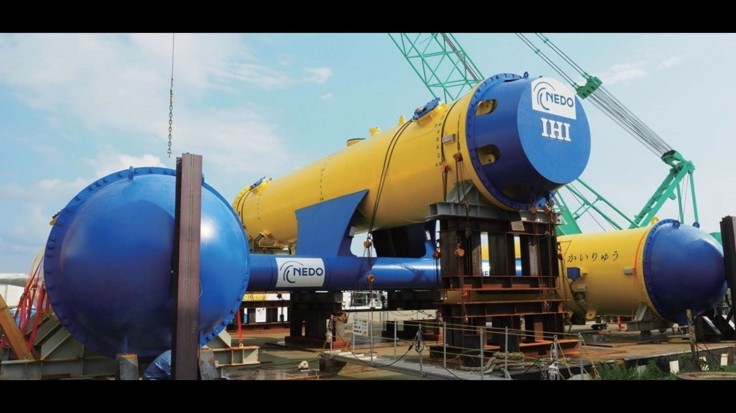
Japan could be the pioneering nation that will bring the world endless green power.
Japanese heavy machinery maker IHI Corp. has recently successfully tested the prototype of its subsea turbine that converts the momentum of deep ocean currents into a source of electrical power, per Bloomberg.
The prototype is a part of the company's efforts to provide Japan with a new source of green energy following the explosion at the Fukushima nuclear power plant in 2011, more than a decade ago, per Futurism.
IHI Corp's Subsea Turbine Details
IHI Corp's deepsea turbine, named the Kairyu, is a deep-sea current turbine that harnesses the energy in deep ocean currents and converts their momentum into a steady and reliable source of electricity, per IHI Corp.
The turbine, according to Bloomberg, resembles an aircraft engine, with it having two counter-rotating turbine fans on each side just like an aircraft's jets, and a central "fuselage" containing a buoyancy adjustment system.
The deepsea turbine weighs 330 tons and is designed to be anchored to the sea floor 100-160 feet below sea level.
The Kairyu was put to the test in late May through a demonstration off the coast of Kuchinoshima Island, Kagoshima Prefecture. IHI Corp. stated that the prototype would be placed along the Kuroshio Current, one of the world's strongest ocean currents.
Read More : Did You Know That an Aircraft's Black Box is Actually Orange? Here are Other Things to Know
According to Japan's New Energy And Industrial Technology Development Organization, the Kuroshio Current could potentially generate as much as 200 gigawatts of power or about 60% of the country's present generating capacity.
During the test, IHI Corp found the Kairyu can produce as much as 100kilowatts of stable power, which is the expected output of the prototype.
IHI Corp. now plans to scale up the prototype's system to make it generate up to 2 megawatts that could be in commercial operation in the 2030s or later.
Why Ocean Currents?
Ken Takagi, a professor of ocean technology policy at the University of Tokyo Graduate school of Frontier Sciences, mentioned that the utilization of ocean currents in Japan is a good idea due to its accessibility.
He explained that just as the ocean currents are more suitable to Japan, wind power, or the use of wind turbines to generate electricity, is more geographically suited to Europe, which is exposed to predominant westerly winds and is located at higher latitudes.
Japan is already the world's third-largest generator of solar power and is heavily investing in offshore wind power, but the use of ocean currents could provide the reliable baseline power the country needs to reduce the need for energy storage or fossil fuels.
Another reason why IHI Corp. wants to utilize the deep sea ocean currents is because of their stability. Unlike solar panels and wind turbines that require a steady stream of sunlight or airflow, ocean currents flow with little fluctuation in speed and direction, which gives them a capacity factor of 50-70% compared with 29% for onshore wind and 15% for solar.
A capacity factor is a measure of how often a power plant (in this case, a green energy generator like a solar panel or wind turbine) runs for a specific period, per Duke Energy.
This definition means that undersea turbines such as the Kairyu can generate electricity 50-70% of the time, which is close to a nuclear power plant's average capacity factor of above 90%.









